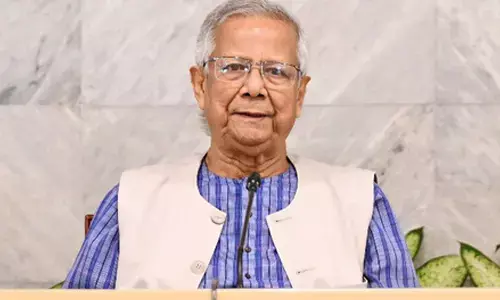Draft NEP stresses learning through mother tongue

- Highlights the students should be taught in their own language till Class VIII
- Draft NEP recommends learning multi-languages on the basis of cognitive capacities of children of 2 to 8 yrs of age
Hyderabad: Contrary to the controversy generated over the draft National Education Policy allegedly recommending imposition of Hindi on non-Hindi speaking peoplethe committee had made it clear that "The science of child development and language acquisition suggests that young children become literate in (as a language) and learn best through (as a medium of instruction) their "local language" i.e. the language spoken at home."
However, the committee's suggestion on learning multiple languages has come in the report in the context of cognitive capabilities of the children. "It is said that children between the ages of 2 and 8 also have an extremely flexible capacity to learn multiple languages, which is a crucial social capacity that must be harnessed, in addition to the well-established cognitive benefits of multilingualism."
The committee had also highlighted the benefits of learning in the mother tongue, the committee pointed out that young children learn and grasp nontrivial concepts most quickly in their mother tongue.
It pointed out that it is well-understood that young children learn and grasp nontrivial concepts most quickly in their home language/mother tongue.
The Policy further recognises the large numbers of students going to school where classes are being conducted in a language that they do not understand, causing them to fall behind before they even start learning. Thus there is a strong need for classes in the early years to be conducted in students' local languages.
On the other hand, textbooks (especially science textbooks) written in India's vernaculars at the current time are generally not nearly of the same quality as those written in English.
It is important that the local languages, including tribal languages, are respected and that excellent textbook are developed in local languages, when possible, and outstanding teachers are deployed to teach in these languages.
Giving its view on the medium of instruction, the committee suggested that the medium of instruction - at least until Grade 5 but preferably till at least Grade 8 - will be the home language/ mother tongue/local language.
Thereafter, the home/local language shall continue to be taught as a language wherever possible. High-quality textbooks, including in science, will be made available in home languages as is needed and feasible, e.g. via the Indian Translation and Interpretation Mission or its State counterparts.
In cases where such textbook material is not available, the language of the transaction between teachers and students will still remain the home language when possible, even if textbooks are, e.g. in the State/regional language.
The school education system will make its best effort to use the regionally preponderant home language as the medium of instruction. However, the system should also make full efforts to establish an adequate number of schools having a medium of instruction catering to significant linguistic minorities in that region.
Bilingual approach for those whose language is different from the primary medium of instruction: The curriculum will encourage a flexible language approach in the classroom.
Teachers will be encouraged to use a bilingual approach, including bilingual teaching-learning materials, with those students whose home language may be different from the medium of instruction to ensure a smoother transition from the home language to the medium of instruction.















